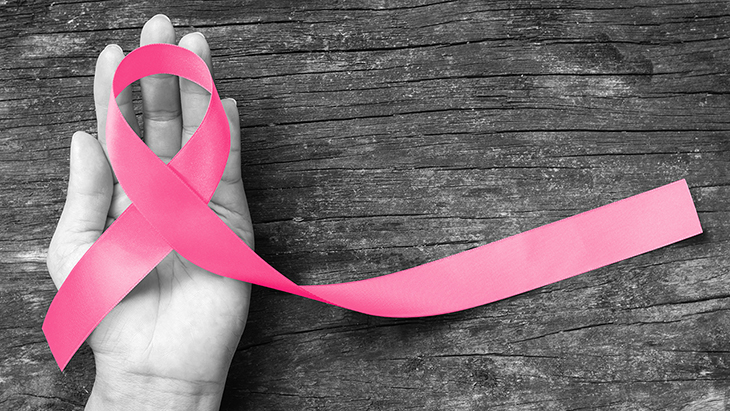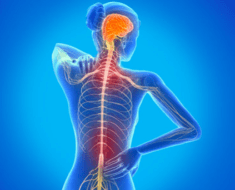
ABC4
Metastatic breast cancer is another term used to refer to stage IV breast cancer. In simplest terms, this means that the cancer has already spread to the parts of the body. The spread is most often found in the liver, brain, bones, or lungs. In terms of stages, this is the most advanced stage. In the U.S. alone, there are over 150,000 women who suffer from this. However, it’s important to note that men can become victims as well.
Metastatic cancer isn’t curable. However, it can be treated so long as you follow the strict advise given by the doctors. The good news is that there are treatments now available. All these have been designed to help slow down its spread. It also helps patients get relief from some of the painful symptoms that’s associated with it. So, what is metastatic breast cancer? What are the best treatment plans? Read on to learn more about this deadly disease.
What areas of the body can breast cancer spread?
Any type of cancer can spread to other areas of the body. When this happens, the term doctors often use is metastatic. Most commonly, the cancer will spread to the bones, lungs, liver, and brain. This could take years to happen, but when it does, it becomes more alarming. WebMD has given an explanation about this matter. They say that the cancer can spread either through the lymph system or bloodstream. Once the cancer cells enter the lymph nodes (in the case of breast cancer, through the axillary lymph nodes that are located in the armpits), it travels into the lymphatic system. This is a collection of lymph nodes and vessels that are closely connected to the body’s immune system.
With the technology perpetually developing, there are now tests available that doctors can turn to so they can determine if and where the breast cancer has gone to. The results will also serve as guide to what the next plan of treatment will be. It must be noted that even when cancer has spread to the other areas, this will still treated as breast cancer by the medical specialists.
What are the most common signs and symptoms you need to know about for breast cancer?
To raise the patient’s chances of survival, early detection is the key. A good way to detect the cancer at its earliest stages is by equipping yourself with the knowledge of its most common signs and symptoms. Through self-examination and religious annual check-ups will be a big help as well.
There are warning signs you need to know about and to look out for. A few examples are a lump in the breast and neck stiffness. To dive deeper into it, here are the most common signs and symptoms you should be aware of.
1. Finding a lump
This is oftentimes the first telltale sign that could mean a breast cancer is forming. A breast lump needs to be checked immediately. However, not all breast lumps are considered cancerous. Benign (non-cancerous) and malignant (cancerous) lumps can also develop in the following areas: under the armpit, near lymph nodes, in the collarbone, and around the nipples.
Lumps may seem rigid, hard, or tender. When you press against these, they also usually don’t move. To perform a self-check, simply apply slight pressure to your breasts and surrounding tissues with your fingers. Book an appointment immediately for further diagnosis if you detect a lump.
2. Your breasts feel itchy
See if you feel itchiness around your breasts even when a rash isn’t visible. This may already be a sign of breast cancer because this is considered a common symptom of inflammatory breast cancer.
The itchiness is also sometimes accompanied by other symptoms. Look for nipple discharge and a change in texture on the skin. Again, it’s best to talk to your doctor once you notice any of these.
3. Your breasts are swollen
This is also a common symptom of breast cancer. This happens because the breast tumor presses and adds pressure on the surrounding tissues.
Aside from the swelling, you may also notice that the skin is red, patchy, and is hot to the touch. The site may also feel tender at times.
4. You notice a change in in the size of the breast
If you or your loved one sees your breast size change, this could be something to watch out for. This is due to the breast tumor altering the shape or size of the affected area.
If you need to check for lumps through self-examination, make sure to check the size and shape as well by looking in the mirror. Also see how your bra fits. If it feels different, this is often a good indicator.
5. Stiffness in the shoulder and neck areas
The feeling of stiffness happens for a variety of reasons, but these are also symptoms of breast cancer. Always remember that if breast cancer is left untreated, it has the ability to quickly spread to the other areas of the body, especially in its latter stages. Areas often affected are the spine, back, and shoulders.
If you notice that you suffer from stiffness in the shoulder and neck areas, try a variety of remedies for relief. A few suggested activities are stretching, rest, or massage. However, if you don’t feel relief after doing what needs to be done, contact your doctor to have yourself checked immediately.
6. Breast tenderness
Breasts feeling tender and sensitive to the touch is sometimes brought about by different factors. Others often relate this to PMS, but it can also be a sign of breast cancer. Tumors generally can cause pain and discomfort, but there are patients who have reported to not feeling anything at all.
The tumor conventionally develops in a small, seed-like structure that lies along the breast tissue, which is why breasts sometimes feel tender when you lie down, or if they are touched. In some cases, they even feel uncomfortable when you put on a bra.
7. You notice the following: nipple discharge, sensitivity, and changes
Breast cancer sometimes begins and develops in the milk ducts surrounding the nipple. If this happens, you will notice a watery, milky, or blood-tinged discharge that eventually forms a scaly crust around the nipple area. As a general rule, any type of discharge from the nipples is never normal unless you’re breastfeeding. Even then, you can only expect milk to come out.
The nipple or nipples also can change and become sensitive to the touch. The sensitivity is often brought about by the tumors. As for the changes in the appearance, these can happen when a tumor forms underneath the nipple area. Some common symptoms are if your nipple becomes inverted, flat, indented, or asymmetrical in shape. Should any of these happen, always set an appointment with the doctor to know what needs to be done.
8. Dimples form on the breast tissue
Should you do a self-check, pay close attention to changes on the breast tissue. In its early stages, the breast tissue can feel thick and different from the tissue that surrounds it.
For instance, the skin over the breasts may look dimpled and red. Some people compare the skin to looking like the skin of an orange (peau d’orange).
What are the symptoms of cancer metastasizing?
The symptoms of metastatic breast cancer can be varied. This depends on the degree of the cancer and how far has already spread. It’s important that you be mindful because below are the different ways it can metastasize.
Metastasis in the bone
The cancer is able to spread to the bones via the bloodstream. If this happens, there will be severe and unbearable pain, most commonly found in back or the hip area. It can also bring about too much calcium in the blood (or what they call hypercalcemia) and swelling. The bones become so fragile that they are easily fractured or broken. The leg and arm may also feel weak and numb at times.
BreastCancer.org says that while breast cancer can spread to any bone, reports say that it can often found in the ribs, spine, pelvis, or in the long bones of the arms and legs. The cancerous cells can also travel into the spongy tissue found inside the bones, which is the bone marrow, the area where blood cells are manufactured.
Metastasis in the lungs
Blood needs to flow through the lungs to pick up oxygen. Hence, these become common spots for metastatic breast cancer. Once this happens, you may not feel the symptoms. BreastCancer.org says that while it’s not noticeable, the symptoms that come out are likely to include pain, wheezing, shortness of breath, and persistent coughing that may or may not be accompanied by blood.
Metastasis in the liver
These cancerous cells can also easily travel into the liver through the bloodstream. That’s because the liver’s main task is to filter the blood. You may also not see or feel symptoms, but if there are, these include pain or discomfort in the abdomen, fatigue, weakness, weight loss, poor appetite, and fever among many others.
Metastasis in the brain
Cancers can always potentially travel to brain, but according to WebMD, HER2-positive and triple-negative cancers are the ones most likely to spread to it. This will always cause symptoms such as a headache that doesn’t go away, seizures, vision or hearing changes, sleepiness, or inability to move specific parts of the body. You may also notice memory issues, changes in speech, and behavioral or personality changes in the patient.
How do you treat metastatic breast cancer?
While treatments tend to last long and can be a very uncomfortable or painful experience, medicine has given the patients the following forms of help:
1. Chemotherapy
This type of treatment most is most associated with cancer. This is also oftentimes the first course of action for the patients. The doctors prescribe an extremely potent medication to damage or destroy the cancer cells. Chemotherapy helps shrink the tumor faster than other forms of medicines.
While this is considered the most effective form of treatment for metastatic breast cancer, it comes with its own set of challenges. The drugs cause side effects such as feeling extremely fatigued, early menopause, hair loss, nausea, and hot flashes.
2. Targeted therapy
The goal here is to target specific characteristics of cancer cells with the use of specialized drugs. The end-goal is to halt the growth of these cells. This is different from chemotherapy because targeted therapy is designed to specifically target just the cancerous cells without affecting the healthy ones. BreastCancer.org explains how this works as the therapy attacks the protein that allows the cancer cells to grow rapidly or abnormally.
While patients are able to avoid all the unfortunate side effects of chemotherapy, this also comes with certain risks. Targeted therapy increases the odds of developing blood clots and it can also bring about high blood pressure or hypertension.
3. Radiation therapy
Radiation therapy is also prescribed by doctors, especially for patients who are experiencing intense symptoms. This helps alleviate or ease the pain as it controls the spread of cancers in a certain area by making use of high-energy waves that are able to kill the cancer cells.
Like the rest on the list, radiation therapy also has certain drawbacks. While it is able to target certain areas, the healthy cells will also be affected at this time. Patients can expect extreme exhaustion as their bodies work overtime to rebuild the affected tissues. Doctors often ask the patients to make sure that they are as healthy as possible by following a strict diet of adequate calories. There are specific diet instructions for them to follow and stick to.
Prognosis
Survival rates are at their best when the cancer is caught at the early stages. The secret here is early diagnosis and treatment because the outcome’s success will be highly dependent on these factors. While metastatic breast cancer diagnosis sounds daunting, it is treatable. Patients don’t always have to equate these words with the end of life because even without a cure, the best course of action is still to study the condition and to properly educate yourself with the treatment options available. Scientists and researchers all over the world have dedicated much of their time and energy to come up with a solution that works best, and hopefully someday in the near future, they can come up with the best cure that every single type of cancer patient can finally turn to for help.









































